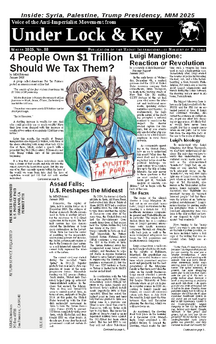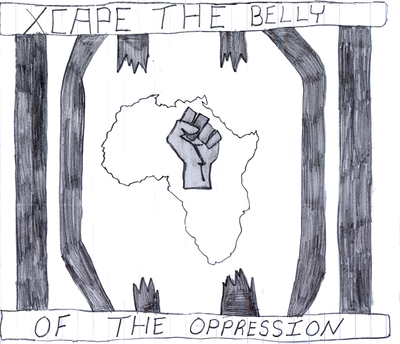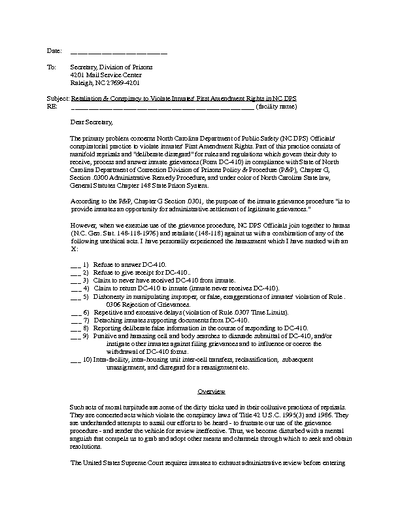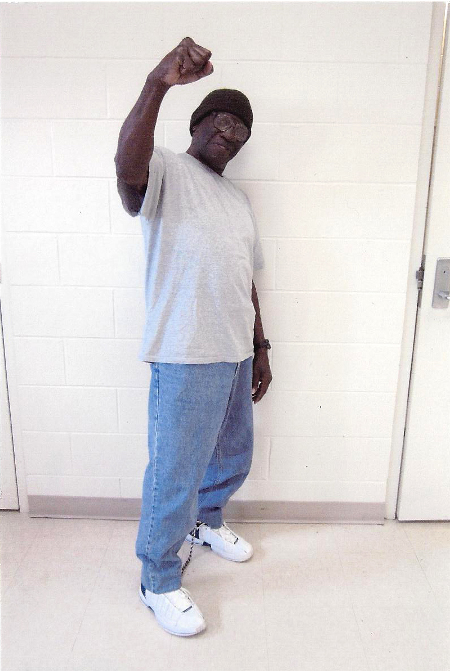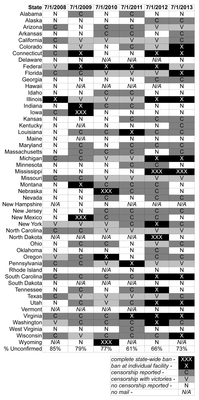
U.$. Showboats As Filipinos Die From Imperialism
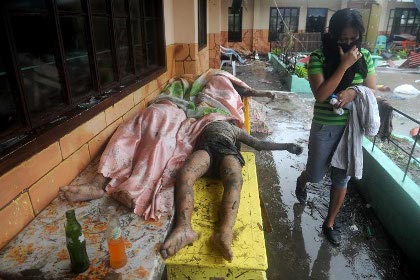
Overall the Philippines is a poor country; in 2012 there were 15 provinces with over 40% of the population below the poverty threshold.(1) While not in one of these 15 provinces, the government reports 32% of people in Leyte (Tacloban’s province) are below the poverty line.(2) These people, living below the poverty line, had an income of less than $179/month for a family of five. A third of Tacloban’s houses have wooden exterior walls and one in seven have grass roofs.(3) In these conditions, it is no surprise that a typhoon could wreak such havoc in Tacloban.
Bodies of the dead are rotting in the streets as aid fails to reach those devastated by the storm. There is no clean water and little food. Yet the Philippines is a country frequently hit by severe storms, with about 20 typhoons a year, and this storm was identified well in advance. Both these conditions should engender preparedness on the part of the government. However, in the Philippines disaster preparation and relief are delegated to local governors without a strong central leadership. Some services are more effectively delivered on a large scale. This is one area where we can show obviously that communism has a better solution than the individualism of capitalism. Where central control will lead to more efficient solutions, a communist-led government would not hesitate to take that control. But capitalism is not focused on serving the people, it is focused on maximizing profits and power for the few. And these profits result in deaths from malnutrition, military aggression, lack of health care, and “natural” disasters. As long as the imperialists retain their power and wealth, they don’t mind tens of millions of preventable deaths a year.
In an interesting historical connection, Imelda Marcos, wife of the former president of the Philippines, is from Tacloban. The family of Imelda Marcos dominated local politics for years; she herself held a congressional seat in the 1990s. Imelda’s husband, Ferdinand Marcos, who ruled in the Philippines from 1965-1986 with the support of the U.$. government, embezzled billions of dollars in public funds while in power. The Communist Party of the Philippines (CPP) waged revolutionary armed struggle against the Marcos regime, growing in strength during the Marcos dictatorship. In the end, when Marcos’s demise was inevitable, the United $tates stepped in to have a role in the change of government, turning on Marcos and backing Corazon Aquino. Her family legacy lives on today as her son Benigno Aquino holds the President’s office. Unfortunately, the popular movement that forced Marcos out did not go further than installing another imperialist puppet. While the communist movement was strong, it was not yet strong enough to lead the people to force the U.$. imperialists out, leaving them to play a dominating role in the country’s politics and economics to this day.(4)
This is the backdrop for the reported six warships the Amerikans sent to
the Philippines last week, with more than 80 fighter jets and 5,000 navy
soldiers.(5) Today the United $tates is taking advantage of the disaster
in the Philippines to increase military presence, while playing the
hero. As reported in a CPP press release:
“The US government is militarizing disaster response in the Philippines, in much the same way that the US militarized disaster response in Haiti in the 2010 earthquake,” said the CPP. The high-handed presence of US armed troops in Haiti has been widely renounced. The US government has since maintained its presence in Haiti…“What the disaster victims need urgently are food, water and medical attention, not US warships bringing in emergency rations to justifty their armed presence in Philippine sovereign waters,” pointed out the CPP. “If the US government were really interested in providing assistance to countries who have suffered from calamities, then it should increase its funds to civilian agencies that deal in disaster response and emergency relief, not in fattening its international military forces and taking advantage of the people’s miseries to justify their presence,” added the CPP.(5)
Much of the press is quiet about the ongoing war in the Philippines between the U.$. puppet regime and the CPP-led New People’s Army (NPA), as well as other liberation forces in different regions of the islands. But it has been brought up in the Filipino press to spread propaganda about NPA soldiers attacking government relief efforts. The Communist Party of the Philippines (CPP) have denounced these lies pointing out that the location of the attack was not in an area where relief efforts were needed. The CPP reiterated that “NPA units in areas ravaged by the recent super typhoon Yolanda are currently engaged in relief and rehabilitation efforts assisting local Party branches and revolutionary mass organizations in mobilizing emergency supply for disaster victims.” Shortly thereafter a ceasefire was declared on behalf of the NPA in order to focus on relief efforts.
The liberation struggle has long been connected to the protection of the natural resources of the islands that the imperialist countries continue to extract for great profits off the backs of the Filipino proletariat.
The storm has also received a lot of attention at a climate change summit in Poland where Filipino officials have begun a hunger strike to attempt to force “meaningful” change in relation to energy consumption. Climate change has been predicted to cause more extreme weather conditions, and this recent massive typhoon is just another possible indicator that that is happening. Yet, as international summits continue, little change is made in the over-consumption of the imperialist nations driving this disaster.
As many in the Filipino countryside have already recognized, the only solution to environmental destruction and disasters is an end to capitalism. With a rational system that puts the needs of the people over the goal of profits, we can build infrastructure suited to the environmental conditions, set up emergency response systems that provide fast and effective support, and plan consumption in a way that does not undercut the very natural systems that we live in and depend on.
